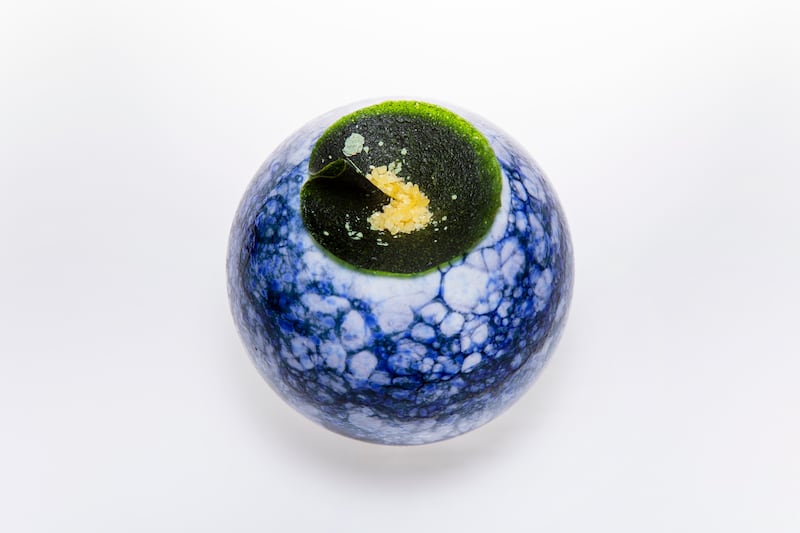I went to all the way to Bangkok to eat pani puri. Yes, Indian street food in Thailand. But this isn’t just any pani puri – it comes dusted with pale pink hibiscus powder and has a delectable filling of creamy Hokkaido corn white mousse.
Another dish – of red prawn from Japan – is made to resemble a Magnum ice cream, with the large-headed crustaceans dipped in coconut milk infused with green chilli oil before being frozen in liquid nitrogen.
The real dessert is far simpler – a medley of yoghurt, cardamom, passion fruit, lychee and butterfly pea – but comes with one, rather-unusual-for-a-fancy-restaurant instruction: Forgo the cutlery, hold the marble-esque plate up with both hands and lick the flavours clean off the surface.
And we do. A bunch of dapper diners who thus far have been sitting in polite silence in an exclusive 14-seater restaurant, are now behaving like mesmerised children.
Welcome to the world of chef Gaggan Anand, a place full of whimsical yet masterfully crafted culinary creations.
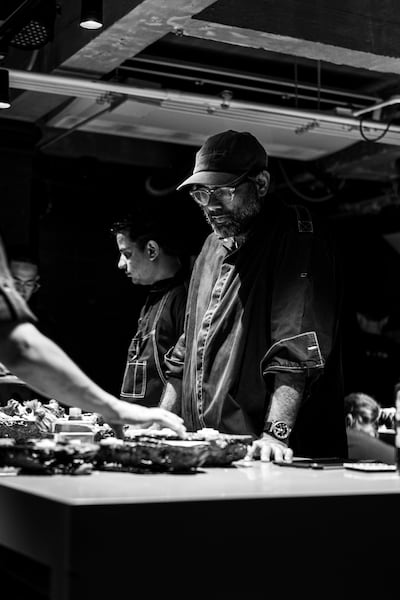
The award-winning Indian chef himself is a revelation. His reputation precedes him, but does not quite do him justice. “Gaggan the grumpy,” I’ve heard people say, as well as “Gaggan the gregarious”. Plus: “Don’t be surprised if he serves you his 14,000-baht [$397] meal wearing a curry-stained apron.”
But there’s none of that at the chef’s eponymous restaurant in the Thai capital’s affluent Watthana district. Instead, Anand is at his passionate best, making diners giggle and gush in equal measure with his exquisite dishes.
At times he takes a back seat from the conversation, pacing around restlessly, playing David Bowie louder than should be permissible in a room of this size, even glowering as we dig into morsel after morsel of convention-defying dishes, and then it’s back to his charm offensive.
It’s all part of the Gaggan Anand show – you never know what to expect in terms of food or mood.
Anand is, above all, a master storyteller. Or, as he describes himself, a conductor leading his team of “rebels” through a symphonic culinary orchestra.
“I hate the term genius,” he proclaims at one point, even as he serves us one of his most technically challenging dishes, which he describes as “fish and chips in reverse”. This entails a filling of potato cooked in mustard oil ensconced within a batter of sea bass floss and sourdough.
My favourite is the deconstructed chole bhature, a North Indian dish of spiced chickpea and wheat flour bread, served here as chana masala hummus filled within a bhatura pocket – a parcel of piquant flavours, deep-fried to deliciousness.
The 22-course menu is redolent with Indian flavours and spices.
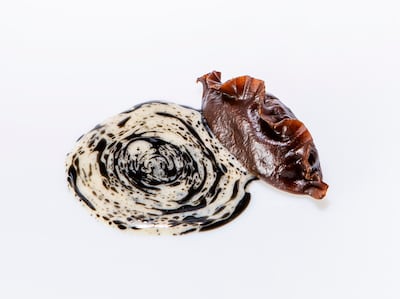
Brined French quail comes marinated in Chettinad spices from the south of India and smoked with precious sandalwood; a Tibetan momo is filled with the quintessential curry of methi matar malai (fenugreek leaves, green peas and cream); green chutney is served akin to a caramelised candy, the spice tempered with a bubble of yoghurt.
Anand first made a name for himself at the defunct Gaggan restaurant, which was awarded top place a record four times on Asia’s 50 Best Restaurants lists, as well as coming fourth on the World’s 50 Best Restaurants list – the highest in history for a restaurant in Asia.
Financial differences with his partners led the chef to leave Gaggan in 2019, only to open Gaggan Anand a mere three months later. “While I was away on a family vacation after this turn of events, my ex-partners tried to buy my team,” he recalls. “One of the most powerful moments of my life was finding that my team of 65 defied the promises of money and instead chose love and loyalty. I became the leader of this band of rebels who wouldn’t work for money, or fame, or recognition, but simply to express our love as a family running a restaurant.”
In just a few years – including the many months the food industry spent languishing under the pandemic – the new establishment reached number five on Asia’s 50 Best Restaurants list and number 17 on the global list.
The Gaggan Anand restaurant is not his only claim to fame, though. The chef serves “fantasy cuisine” at the intriguingly named Ms Maria and Mr Singh, which currently ranks at No 33 on Asia’s 50 Best Restaurants list and is located just above his 14-seater den.
Here he, alongside chefs Hernan Villalva, Roshan Kumar and Rydo Anton, dishes up Indian-Mexican fare from the two countries that Anand believes have a great deal in common – from food and family values to culture and traditions.
It’s here that I sample the aforementioned pani puri with Hokkaido corn, which go surprisingly well together.
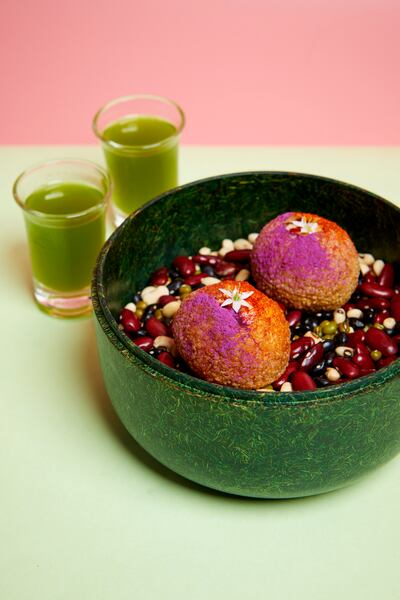
The medley of other dishes, too, meld Mexican and Latin American staples (think tacos, tostadas and ceviche) with Indian signatures such as vindaloo, kidney beans and palak paneer. Guacamole is served with poppadums rather than tortillas; tacos come filled with aubergine bharta; while the so-called “sampanada” is a perfect marriage of a samosa and an empanada, with potatoes, green peas and mango salsa.
The cheery decor and funky figurines of Ms Maria and Mr Singh are inspired by both Oaxaca and Jodhpur, and are a far cry from the unadorned, neon-lit cave that is Gaggan Anand. However, one bite of the chargrilled squid with chocolate-peanut mole and green chutney, and you realise this is a restaurant – and a restaurateur – taking food very seriously.
Anand also has a stake in the two Michelin-starred Suhring, the third restaurant on my great culinary tour of Bangkok.
Where Gaggan Anand is cavernous, even cacophonous, thanks to all that blaring Bowie, Suhring is elegance personified. Led by German twin chefs Thomas and Mathias Suhring, the restaurant is in a verdant villa in the Yan Nawa district.
German food is not often regarded as the creme de la creme of cuisines, but the brothers want to change that perception and elevate the food of their home country to haute cuisine levels.
A tasting menu is served in a greenhouse-style alcove, dubbed the Glass House, overlooking lush wild plants. The white linen table is covered with Limoges porcelain by 200-year-old French maison JL Coquet.
So far, so beautiful. And what follows next is nothing short of masterful.
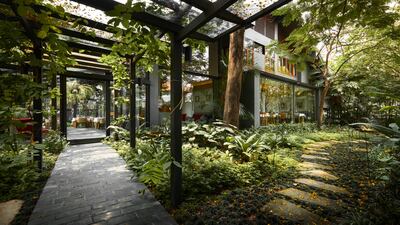
The meal begins with a tart of classic Bavarian obatzda cheese. Unlike the overly salty version that obatzda has become in most German restaurants, this one is made from aged Camembert and has the subtlest of textures, giving the crunchy cress and creamy radish mousse a chance to shine.
A second amuse-bouche is inspired by “housewife-style mackerel”, but this is progressive cuisine, after all. The pickled fish, while tasty in its own right, does not take over the dish. Rather, it is the combination of dill gel, sour cream, crunchy apples and a smoked crepe tart that really makes it sing.
Berlin speciality eel jelly consomme comes with dollops of opulent caviar, as does the Hamburg staple of beef, potato and beetroot, served here with a pleasing pate-like consistency.
The river trout is smoked in-house with apple wood; the cod is glazed with seaweed and meant to be enjoyed with a fennel dome accompaniment; and the 10-day-aged duck is served alongside candied beetroot.
Even the spatzle egg noodles – the ubiquitous simple side found across Central Europe – are elevated with mushroom cream and fresh black truffle shavings.
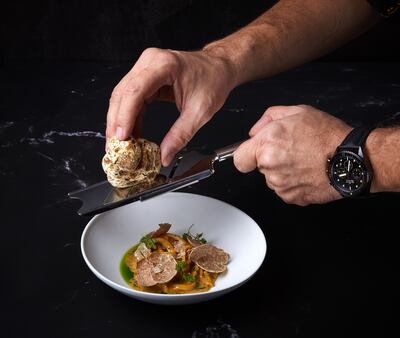
However, no German meal is complete without bread and butter. At Suhring this takes the form of a sourdough loaf baked from an eight-year-old starter that the chefs fermented a year before the restaurant even launched.
It’s just the type of thing that has led the brothers to their success: Precision, calculation and long-lasting impressions.
The most brilliant dish by far, though, is also the one that looks the most unassuming. It comes in a little package labelled “Enleta” – a hazelnut wafer snack brand enjoyed by children – and indeed feels like something you’d expect to find in a corner shop.
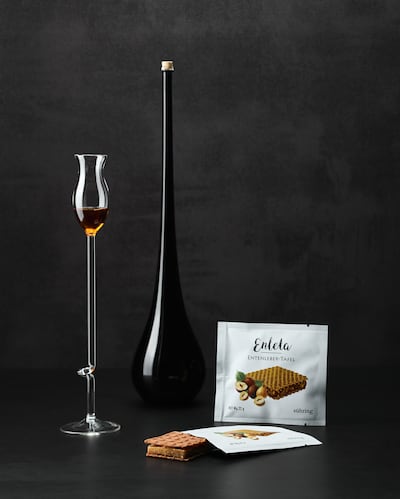
But therein lies that haute cuisine twist. Not only is this waffle custom-created for the restaurant, but it also contains a duck liver pate infused with hazelnut and layered between the two wafers.
This is meant to be washed down with a slender pipette of drinking vinegar; each batch has been oxidated for a decade, then macerated for six months with honey and apricot before finally making its way to the Suhring table.
My final foray into Bangkok’s world-famous dining scene arrives at the hands of Dej Kewkacha, the pastry chef behind Kyo Bar, who often accompanies Anand on culinary pop-ups.
Named Best Dessert Cafe by Bangkok’s Best Restaurants Awards in 2019, Kyo Bar serves a set menu of desserts inspired by Japan and Thailand, which changes seasonally in a similar fashion to Kyo-Kaiseki meals, which are popular in Kyoto.
An omakase menu of sweet treats is a fitting way to end my trip, I think, but little do I realise just how dramatic dessert can be.
For one, it’s more salty than sweet thanks to generous dollops of caviar, served as a garnish on the “bread course” of this dessert menu, on top of a sourdough sorbet and burnt butter meringue. There are also herbaceous vegetables, earthy asparagus and spicy larb powder, all posing as pastry and doing a fine job of it, too.
The veggies – or “salad course” – take the form of a spinach and kale granita with compressed kiwi and musk melon, mojito jelly and local dill; white asparagus is served poached and pureed with coconut water and seasonal custard apple; while the spiced larb is sprinkled on top of gooey dark chocolate placed inside a whole, scooped-out kaffir lime.
It’s a befittingly bittersweet end to a once-in-a-lifetime culinary trip.
